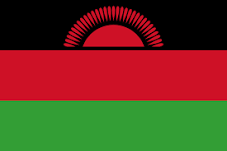Maximizing Profitability In Climate-Adaptive Goat Breeds

01 Feb 2024
By Lorato Kgakatsi
Goat farming has been earmarked as an industry that could grow to the level of cattle farming. Botswana is a country known for quality meat exported to the European market. Currently, the government is working with farmers to come up with strategies that could increase the number of small stocks. An abattoir is currently under construction in the southern part of the country that will slaughter and export small stock. There has been a significant increase in small-stock farmers in the country, especially women and youth, because of the funding opportunities that the government has extended to this particular group. What is of concern is that despite efforts by the government to support this industry generously, numbers are not increasing as expected.
Climate change has significantly impacted agriculture as a whole, as it has changed how farmers are farming. Farmers are currently experiencing outbreaks of diseases that do not normally occur in winter. This has put pressure on them to devise ways to mitigate this.
A renowned stud breeder of Kalahari red goats, Faheem Kala, has shared why the Kalahari Red is ideal for climate-smart goat production. Below is what Mr. Kala has asserted about Kalahari Reds.
Kalahari reds are fully pigmented and, therefore, able to endure Botswana's climate's heat and intense sunshine. Their earthy color camouflages them from predators, ensuring that kids, in particular, are well hidden from wild dogs, hyenas, foxes, pigs, and eagles, to name a few. The uniform, solid red color has a number of additional benefits. The Kalahari Red is very tolerant of extreme temperatures. Botswana summer can reach 45 degrees Celsius, and winters can drop to below freezing point in the desert, but this does not affect the performance of the Kalahari Red. These fully pigmented dark coats, along with the breed's long ears, provide strong heat resistance. This allows Kalahari Reds to feed for longer during the heat of the day, which ultimately results in higher weight gains, greater milk production, and faster growth, adding to the hardiness of the animals, saving on feeding expenses and excellent cross-breeding potential.
Kalahari Reds are less susceptible to diseases and need to be inoculated and dosed far less than other breeds. This “easy-care” aspect makes Kalahari Reds particularly well suited to non-labor intensive farming. In Botswana, with the majority of the small stock farming in Botswana being part-time ‘remote-control farmers’ or a hobby for most, this hardiness is particularly advantageous. Farm laborers are also a major problem in Botswana, and the hardiness and “easy-care” aspect can be favorable when there is no attention to the goats from the ‘badisa.’
A further benefit comes in the form of the Kalahari Reds’ ability to thrive in typically harsh and outstretched conditions. The arid, semi-desert areas of Botswana are, for example, ideal by virtue of the sun-resistant, resilient, and hardy animals. With the natural cycle of evolution, wherein only the fittest survive, today’s Kalahari Reds are the strongest and the sturdiest, with top-quality bloodlines now in high demand. Kalahari Reds are thriving in every district in Botswana today, with the number of breeders in the country on the rise. Their excellent mobility enables them to journey far in search of food and water, and their ability to feed on a wide variety of plants makes them incredibly agile and easily adaptive.
Again, as mentioned, Kalahari Reds are typically less susceptible to disease than other goat breeds and are more resilient and tougher. The limited use of vaccines on this breed makes the production of organically produced meat possible. This results in lean, quality meat with excellent taste and texture. Remember, goat meat is the healthiest meat on the market!
The mothering abilities of Kalahari Reds are yet another strong factor in what makes this breed a highly coveted one amongst farmers. They naturally have excellent mothering instincts; they kid in the veld and raise their kids there. Thus, no laborers are needed to assist ewes in finding their young, once again well suited to less labor-intensive farming climates such as Botswana. The does, inherently fertile, produce plenty of milk, thus ensuring that the kids grow fast and are well nurtured. New-born kids are strong and have a strong urge to suck, thus further enhancing their growth potential. Breeders select twins that are usually of equal strength, thus increasing the likelihood of a fast-growing, strong herd. Kalahari reds typically herd well, and the animals tend to flock together. They breed throughout the year and can kid three times in two years with a kidding percentage of over 180%, again allowing for a strong herd growth rate for a farmer, which, in the end, means increased profitability.
Faheem Kala is a registered stud breeder of Kalahari reds. He currently owns BUSHRA Stud Breed, which specializes in Kalahari Reds. He is based in Botswana. Email: bushra.stud@gmail.com
The author is an Information and Public Relations Officer in the Ministry of Agriculture in Botswana and she is also the National CCARDESA focal point person.

























































